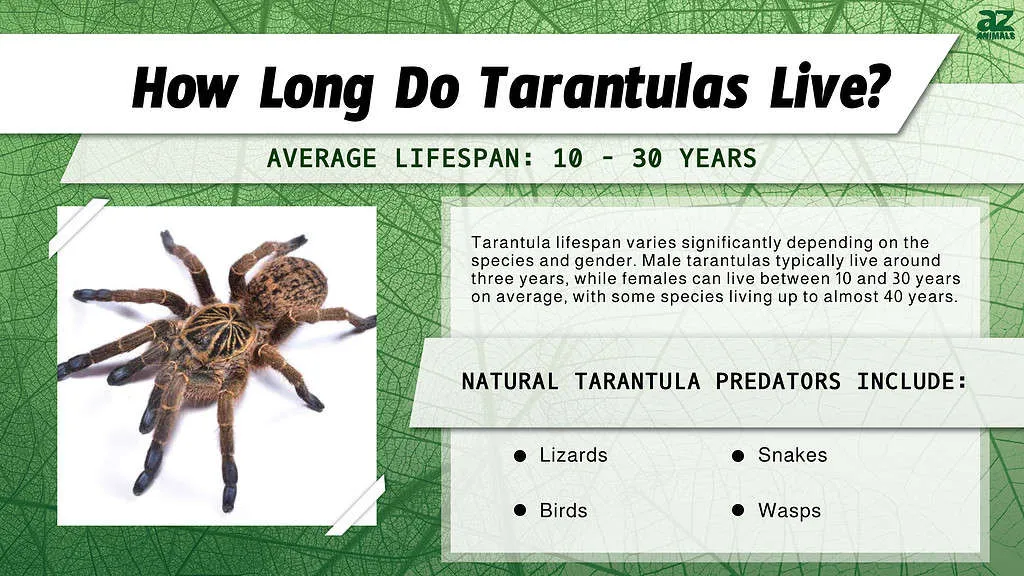Top 5 Facts About Longest Lifespan Tarantulas
Tarantulas, with their impressive size and often intimidating appearance, are fascinating creatures. One of the most intriguing aspects of these arachnids is their lifespan, which can vary significantly depending on the species, sex, and environmental conditions. This article delves into the top 5 facts about tarantulas with the longest lifespans, providing a comprehensive overview of the factors that contribute to their longevity and highlighting some of the most enduring species. We will explore specific tarantulas known for their extended lifespans, providing insight into their care, habitat, and the secrets to their longevity. Whether you are a seasoned tarantula enthusiast or a curious newcomer, this guide will offer valuable information about these remarkable creatures and their life cycles.
The Champion Chilean Rose
The Chilean Rose tarantula (Grammostola rosea) often tops the list when discussing tarantulas with the longest lifespans. These tarantulas are known for their relatively docile temperament and ease of care, making them popular choices for beginner pet owners. Female Chilean Rose tarantulas can live for an impressive 15 to 20 years, sometimes even longer under optimal conditions. Their longevity makes them a rewarding pet for those willing to provide the necessary care and attention. The Chilean Rose’s lifespan is a testament to its resilience and adaptability, as well as the importance of responsible pet ownership in ensuring the well-being of these creatures. Their ability to thrive in captivity offers a unique opportunity to observe and appreciate the intricacies of the tarantula life cycle.
Factors Affecting Lifespan
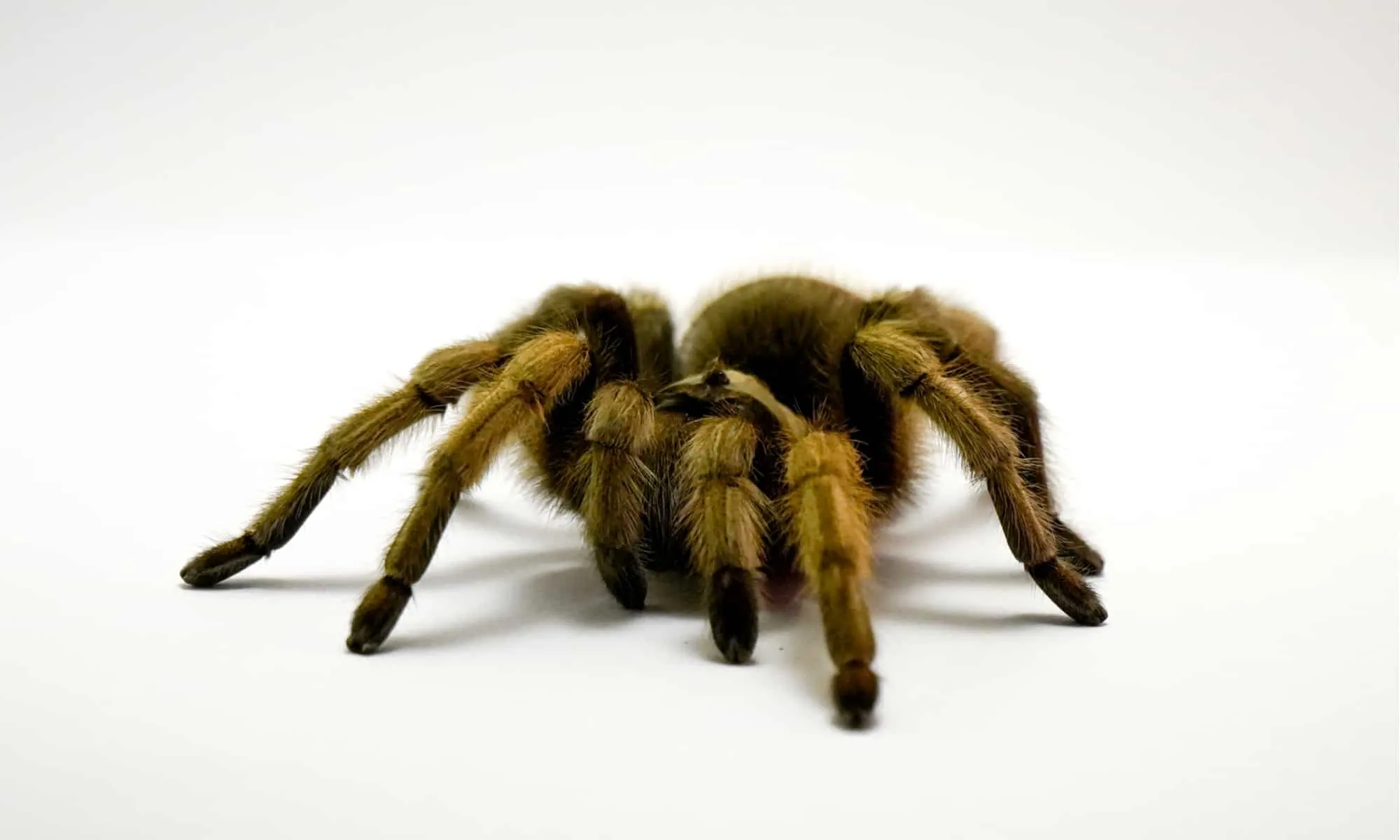
Habitat
The environment in which a tarantula lives plays a crucial role in its lifespan. In the wild, tarantulas face various challenges, including predation, habitat destruction, and fluctuating weather conditions. In captivity, however, their habitat can be carefully controlled to ensure their well-being. Providing an appropriate enclosure with the correct temperature, humidity, and substrate is essential for a tarantula’s health and longevity. A well-maintained habitat minimizes stress and promotes the tarantula’s overall health, allowing it to live out its full lifespan. Careful attention to detail in creating and maintaining the tarantula’s environment is key to their long-term health, which is vital for their lifespan. This also includes proper ventilation, and regular cleaning of the enclosure to prevent the build-up of harmful bacteria and mold.
Diet
A balanced diet is fundamental to a tarantula’s lifespan. Tarantulas are carnivorous, and their diet primarily consists of insects, such as crickets, mealworms, and roaches. The nutritional value of the food provided directly impacts the tarantula’s health and longevity. Overfeeding can lead to obesity and other health problems, while underfeeding can result in malnutrition. Providing a varied diet with appropriate supplements, such as calcium and vitamins, can further enhance their health. The size of the prey should also be considered, ensuring that it is appropriate for the tarantula’s size and age. Regular feeding schedules and the availability of fresh water are crucial for a tarantula’s well-being, contributing significantly to its overall lifespan. Responsible feeding practices are a cornerstone of proper tarantula care, contributing to a long and healthy life.
Care
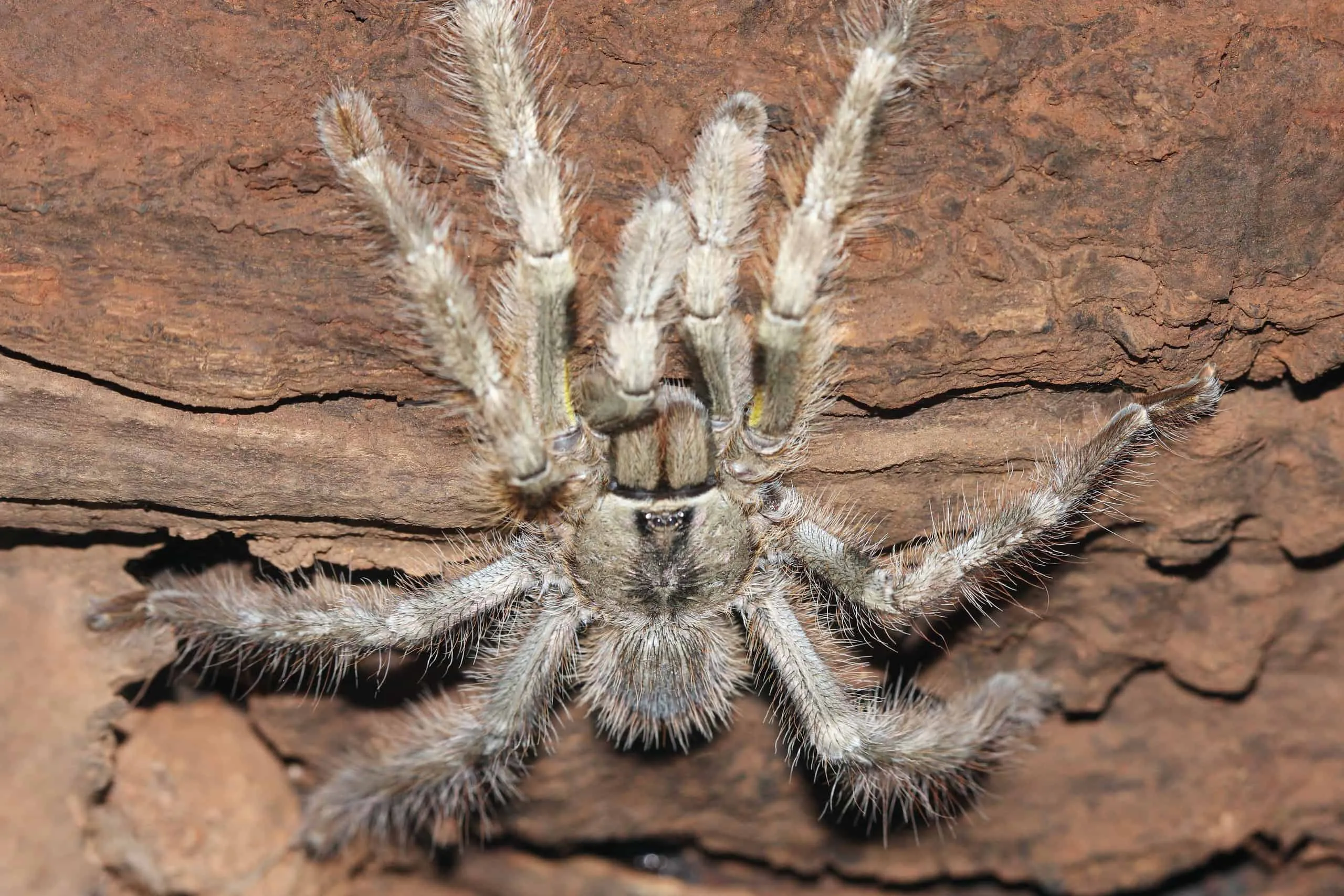
Proper care is the most important factor influencing a tarantula’s lifespan in captivity. This includes providing a suitable enclosure, maintaining the correct temperature and humidity levels, and offering a balanced diet. Regular cleaning of the enclosure is also crucial to prevent the build-up of harmful bacteria and maintain a healthy environment. Handling should be kept to a minimum, as it can cause stress to the tarantula. It is also important to be aware of common health issues, such as mites, and to seek veterinary care if necessary. Providing a safe and enriching environment, along with responsible pet ownership, will contribute significantly to a tarantula’s long and healthy life. Consistent attention to detail and a commitment to the tarantula’s well-being will ensure a long and fulfilling life for your pet.
The Mexican Red Knee Tarantula
The Mexican Red Knee tarantula (Brachypelma hamorii), another popular choice for pet owners, is known for its striking appearance and relatively long lifespan. Females of this species can live for 20 to 30 years or even longer, while males typically have a shorter lifespan. Their longevity, combined with their calm temperament and ease of care, makes them an excellent choice for those seeking a long-term pet. The Mexican Red Knee tarantula’s vibrant colors and relatively docile nature add to its appeal. It is a great species for those who are willing to provide proper care and attention. Their lifespan is a testament to the importance of providing a suitable habitat and a balanced diet, leading to years of enjoyment for the owner.
Lifespan and Characteristics
The lifespan of tarantulas is strongly correlated with their size and sex. Larger species generally have longer lifespans than smaller ones, and females tend to live significantly longer than males. For example, female tarantulas can live for decades, while males often die shortly after reaching maturity and mating. The extended lifespan of female tarantulas is likely due to their role in reproduction, requiring them to survive long enough to lay multiple egg sacs. Male tarantulas, on the other hand, have shorter lifespans because they prioritize mating and subsequently experience a decline in health. Understanding the relationship between size, sex, and lifespan is important for anyone considering owning a tarantula, and it helps in providing proper care and setting appropriate expectations. The longer lifespan of females also makes them a more significant commitment for pet owners.
Popularity as Pets
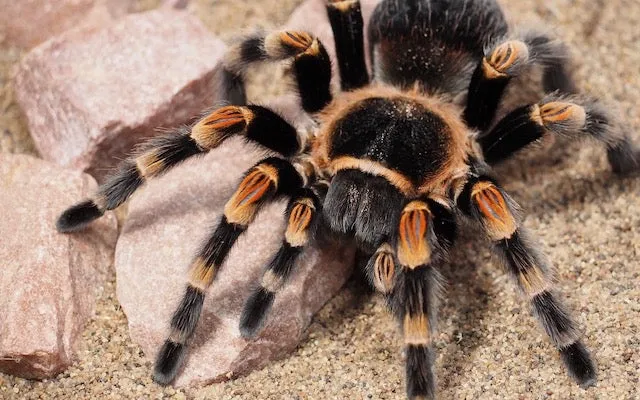
Tarantulas are increasingly popular as pets due to their fascinating behavior, relatively low maintenance requirements, and diverse appearances. The Chilean Rose and Mexican Red Knee tarantulas are particularly sought after for their docile temperaments and ease of care, making them ideal for both beginners and experienced hobbyists. Their longevity, combined with their interesting behaviors and beautiful colors, adds to their appeal. The popularity of tarantulas has led to the development of a large and supportive community. This community provides valuable resources and guidance for new and experienced owners alike. It is important to remember that responsible pet ownership includes researching the specific needs of the chosen species, providing a suitable habitat, and ensuring proper care to promote the tarantula’s health and longevity. The rise in popularity of tarantulas as pets demonstrates the growing fascination with these creatures.
The King Baboon Tarantula
The King Baboon tarantula (Pelinobius muticus), native to Africa, is another species that can live for a considerable amount of time. While not as commonly kept as some other species, the King Baboon tarantula, particularly females, can live for over 20 years with proper care. These tarantulas are known for their impressive size and powerful build, making them a sight to behold. They have specific habitat and dietary requirements. They require a warm and humid environment and a diet consisting of insects. Understanding and meeting the unique needs of the King Baboon tarantula are essential for ensuring their well-being and maximizing their lifespan. These tarantulas are a testament to the diversity and resilience of tarantulas as a whole.
Lifespan and Habitat
The habitat of the King Baboon tarantula, like all tarantulas, plays a crucial role in its lifespan. In captivity, providing a spacious enclosure with appropriate substrate, temperature, and humidity levels is essential. These tarantulas are terrestrial and spend most of their time on the ground, so a large enclosure with ample space for burrowing is recommended. The enclosure should also be well-ventilated to prevent the build-up of harmful gases. Maintaining the proper temperature and humidity levels is critical for the tarantula’s health. This ensures that the tarantula thrives and lives as long as possible. A well-maintained habitat minimizes stress and promotes overall health, and regular cleaning and maintenance of the enclosure are vital for preventing the growth of mold and bacteria.
Interesting Facts
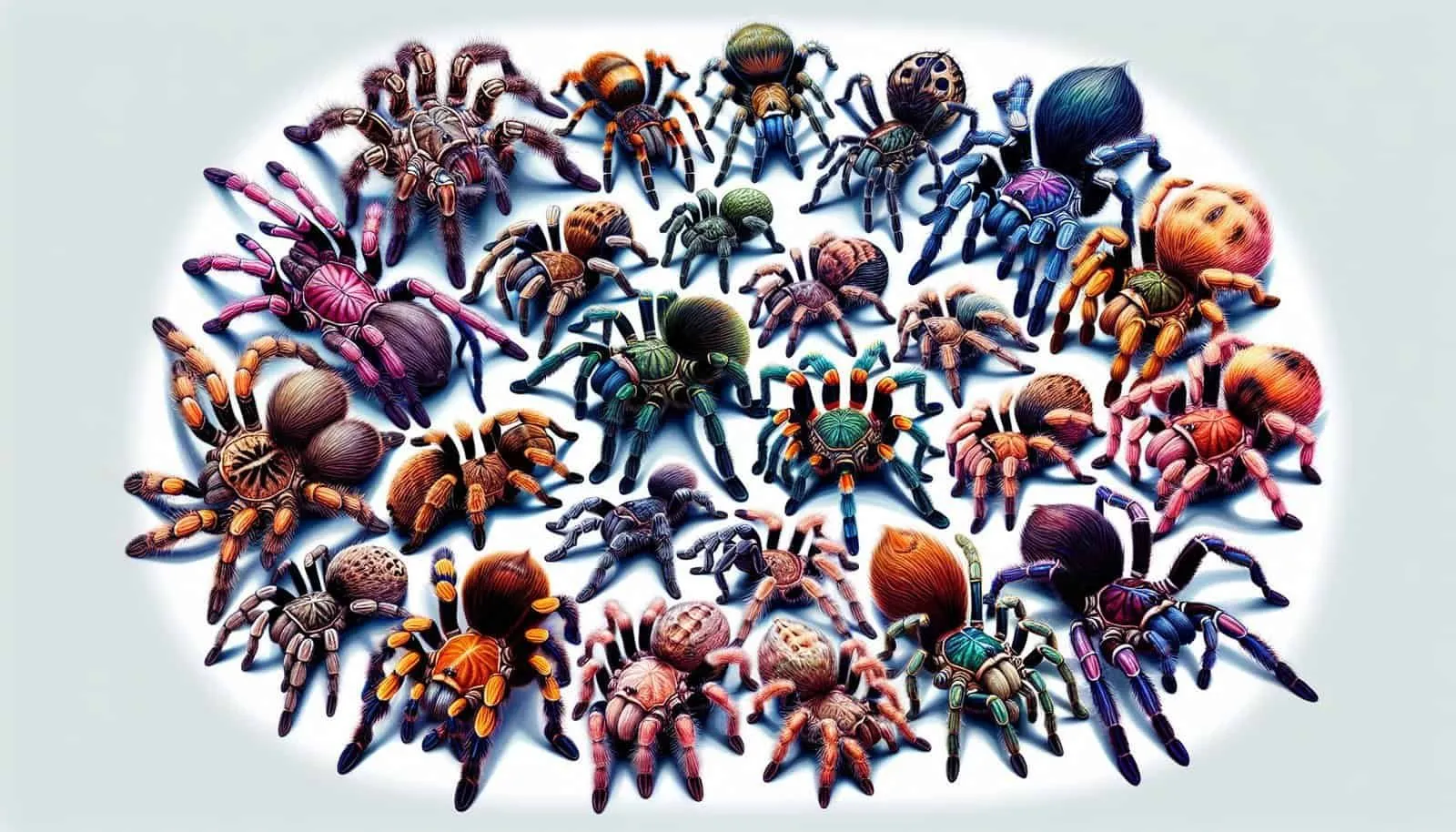
King Baboon tarantulas are known for their defensive behavior. They are quick to bite if they feel threatened, so handling should be avoided. They are also known for their impressive size and the distinctive hairs on their legs, which they use to sense their environment. Their long lifespans, along with their unique characteristics, make them an intriguing species for those interested in tarantula care. They showcase the diverse range of adaptations found within the tarantula family. They require specific care to thrive, but with the right conditions, they can be rewarding pets. Their longevity and fascinating behaviors add to the allure of these creatures.
Other Long-Lived Tarantulas
Besides the Chilean Rose, Mexican Red Knee, and King Baboon tarantulas, several other species are known for their long lifespans. These include certain species of the genus Brachypelma and some arboreal tarantulas, like the Pinktoe tarantulas. The lifespans of these tarantulas are dependent on the quality of care they receive. Providing a suitable habitat, a balanced diet, and a stress-free environment are critical for their health and longevity. The specific needs of each species vary, so research is always essential before acquiring any tarantula. Understanding the unique requirements of each species allows owners to provide the best possible care, maximizing the chance of a long and healthy life for their tarantula.
Understanding Gender and Lifespan
A significant factor influencing a tarantula’s lifespan is its sex. Female tarantulas generally live much longer than males. This difference is due to several factors, including the biological roles of each sex. Male tarantulas mature faster and their primary purpose is to reproduce. Their lives typically end shortly after mating, sometimes within months. Female tarantulas, on the other hand, invest more in their longevity, as they need to survive long enough to lay multiple egg sacs. Understanding the differences in lifespan between male and female tarantulas is crucial for setting expectations when acquiring a tarantula. This includes understanding the length of commitment involved in caring for a tarantula. Proper care and a suitable environment are essential for both sexes, but female tarantulas offer the prospect of a significantly longer-term pet.
Male vs Female Lifespan
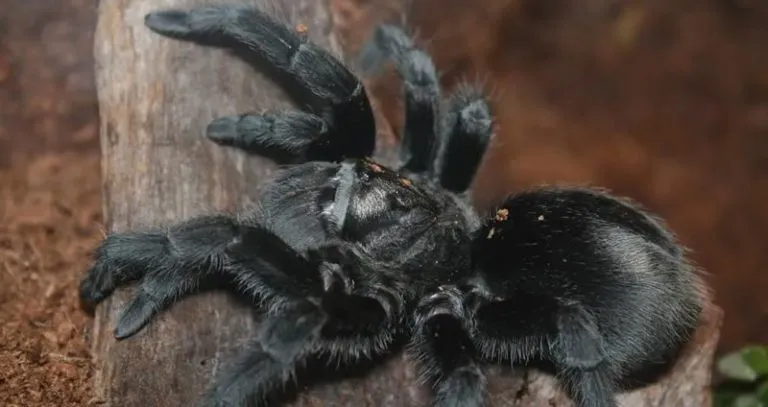
The contrast between the lifespans of male and female tarantulas is dramatic. Male tarantulas often live only a few years, while females can live for over 20 years. This disparity underscores the biological differences between the sexes. Male tarantulas prioritize reproduction, leading to a shorter lifespan. They undergo a final molt into adulthood, develop reproductive organs, and then begin their search for a mate. After mating, the male’s health deteriorates rapidly, and they often die soon after. Female tarantulas, on the other hand, continue to molt throughout their lives, allowing them to grow and reproduce repeatedly. This repeated molting also means that female tarantulas need to consume more food and nutrients, thus, owners need to provide the proper care. This difference emphasizes the importance of understanding the specific needs of each sex. Doing so helps owners provide optimal care, ensuring the tarantula’s health and well-being.
Influence of Environment
The environment plays a vital role in influencing the lifespan of all tarantulas. In captivity, controlling the habitat is key to extending their lives. Factors such as temperature, humidity, and substrate type must be carefully managed to mimic the tarantula’s natural environment. Providing a clean and spacious enclosure, free from potential hazards, is also important. Regular cleaning and maintenance prevent the build-up of harmful bacteria, mites, and mold. Proper ventilation is necessary for air circulation, which also helps control humidity. Careful monitoring of these environmental factors is essential for ensuring that the tarantula’s needs are met, and the result is a long and healthy life. Responsible pet owners are diligent about creating the optimal environment for their tarantula’s survival. Doing so maximizes the tarantula’s lifespan and enhances the overall quality of life.
